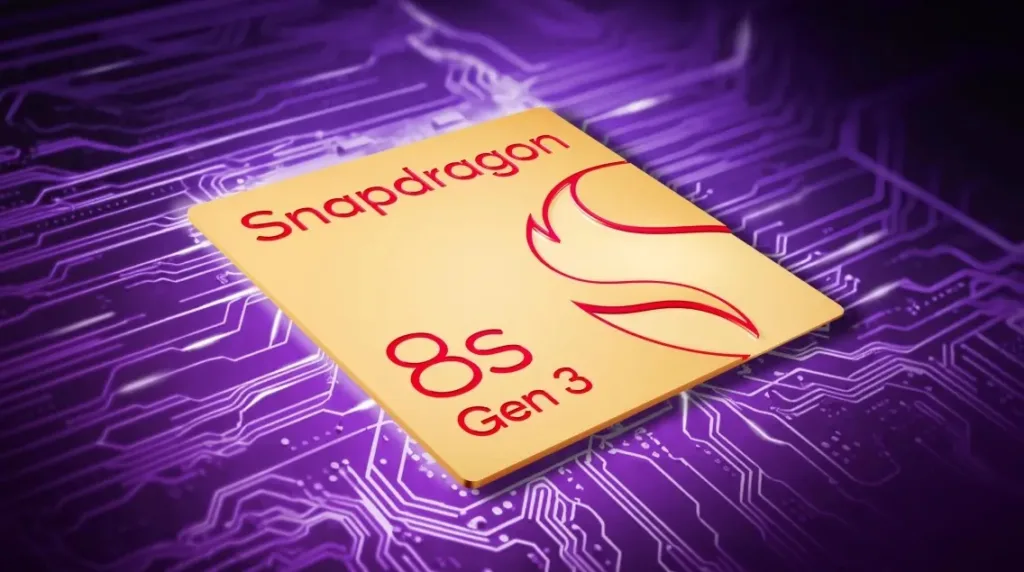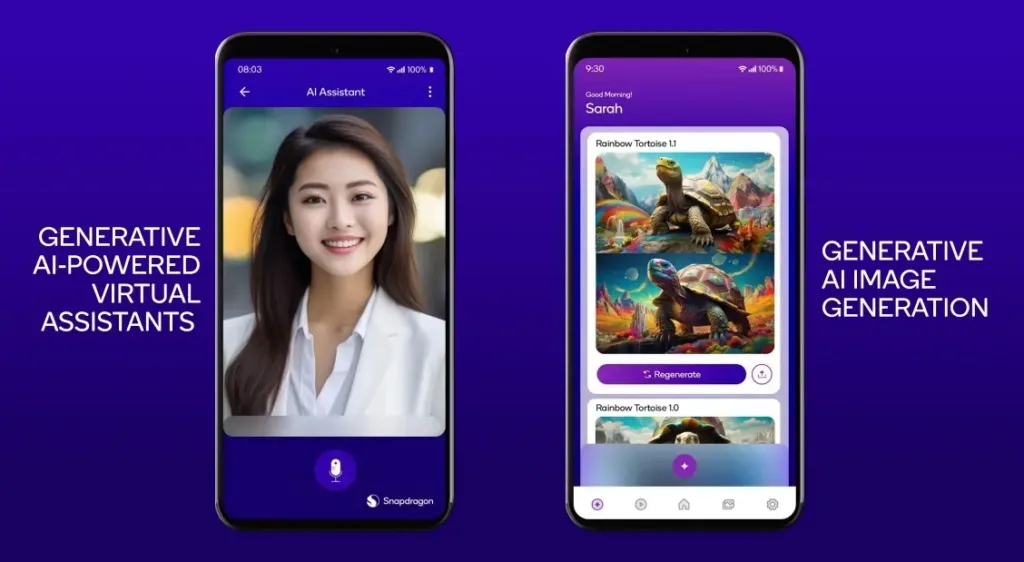
Qualcomm recently unveiled its latest addition to the Snapdragon 8 series lineup, the Snapdragon “8s” Gen 3. This new chipset joins the premium segment alongside the existing Snapdragon 8 Gen 3. What distinguishes the Snapdragon 8s Gen 3? Qualcomm states that it is designed with “specially selected Snapdragon experiences.” To highlight the differences between the Snapdragon 8s Gen 3 and the Snapdragon 8 Gen 3, we have conducted a thorough comparison of their CPU layouts, GPU capabilities, modem performance, and more. Let’s delve into the comparison to understand these two flagship chipsets better.
Specifications Comparison Table
Here is a key specifications comparison between the Snapdragon 8s Gen 3 and the Snapdragon 8 Gen 3. Take a look to quickly understand the differences between Qualcomm’s two flagship chipsets.

Snapdragon 8s Gen 3 vs 8 Gen 3: CPU Comparison
Let’s start by comparing the CPUs of the Snapdragon 8s Gen 3 and the 8 Gen 3. Both chipsets boast eight Kryo CPU cores, albeit arranged in different configurations.
In the Snapdragon 8s Gen 3, there is a single prime core, the Cortex-X4, running at 3.0 GHz. Additionally, it includes 4x performance cores (Cortex-A720) clocked at 2.8 GHz and 3x efficiency cores (Cortex-A520) clocked at 2.0 GHz.

In contrast, the flagship Snapdragon 8 Gen 3 features higher clock speeds across all cores. The standard version of the Snapdragon 8 Gen 3 has its Cortex-X4 core clocked at 3.3GHz, which is 300MHz higher than the Snapdragon 8s Gen 3. Moreover, the Snapdragon 8 Gen 3 for Galaxy, with a peak frequency of 3.4GHz, provides an additional 100MHz boost to the Cortex-X4 core, widening the gap to 400MHz when compared to the new Snapdragon 8s Gen 3.
When it comes to performance cores, the Snapdragon 8 Gen 3 packs a total of five Cortex-A720 cores, whereas the SD 8s Gen 3 only includes four such cores. The Snapdragon 8 Gen 3 features 3x Cortex-A720 cores clocked at 3.2GHz and 2x of the same cores clocked slightly lower at 3.0GHz. Once again, compared to the 8s Gen 3, the frequency difference ranges from around 200MHz to 400MHz.
Moving on to efficiency cores, the Snapdragon 8 Gen 3 has just 2x Cortex-A520 cores (whereas the SD 8s Gen 3 has three), but the clock speed is higher, peaking at 2.3GHz. This results in a difference of 300MHz.
While Qualcomm has kept the same cores in both chipsets, the peak frequency has been decreased in the 8s Gen 3. This means that in terms of CPU performance, the latest Snapdragon 8s Gen 3 would rank below the Snapdragon 8 Gen 3 and might even struggle to surpass the 2022 flagship Snapdragon 8 Gen 2. Nevertheless, the CPU performance is expected to be superior to Snapdragon 7 series chipsets. I’m eager to test this new chipset and see where it stands.
Once I have an 8s Gen 3-powered smartphone in hand, I will run the Geekbench test to evaluate how the CPU compares to Qualcomm’s premium-tier chipsets. Stay tuned for a series of benchmark tests.
Snapdragon 8s Gen 3 vs 8 Gen 3: GPU Comparison
Shifting focus to the GPU, Qualcomm has not disclosed key details about the new Adreno GPU inside the Snapdragon 8s Gen 3. However, leaks indicate that the 8s Gen 3 is equipped with the Adreno 735 GPU, which is a slightly underclocked version of the Adreno 750 GPU found in the 8 Gen 3.

The Adreno 735 GPU from Qualcomm supports most of the Snapdragon Elite Gaming features, such as Hardware-accelerated Ray Tracing, Adreno Frame Motion Engine 2.0 (AFME), Super Resolution, HDR gaming, Shadow Denoiser, and more.
Nevertheless, the Snapdragon 8s Gen 3 lacks two headline gaming features: support for Unreal Engine 5 Lumen Global Illumination and Reflections System.
Despite having HW-accelerated Ray Tracing support, the absence of Global Illumination means games on Snapdragon 8s Gen 3-powered devices won’t have the same level of authentic lighting, reflections, and shadows as those on Snapdragon 8 Gen 3-powered phones.
Snapdragon 8s Gen 3 vs 8 Gen 3: NPU Comparison
Qualcomm states that the Hexagon NPU on the Snapdragon 8s Gen 3 is comparable to the m8 Gen 3’s Hexagon AI Engine. Both chipsets can run AI models with up to 10 billion parameters on-device and support multi-modal models. Whether it’s photo enhancement or AI image generation locally, both SoCs are capable of handling various Generative AI tasks.

However, the AI performance of the Snapdragon 8s Gen 3 won’t match that of the Snapdragon 8 Gen 3. The relatively weaker CPU and GPU in the 8s Gen 3, which are also utilized for AI tasks alongside the NPU, will certainly impact the overall performance.
Snapdragon 8s Gen 3 vs 8 Gen 3: Image Signal Processor (ISP) Comparison
Both chipsets feature the same building blocks for their ISPs. They come equipped with a Cognitive ISP that includes triple 18-bit ISPs and supports real-time semantic segmentation with up to 12 layers, for both photos and videos. Both chipsets offer identical photo-capturing capabilities. However, the Snapdragon 8 Gen 3 can record 8K HDR videos at 30 FPS, while the Snapdragon 8s Gen 3 is limited to recording 4K HDR videos at 60 FPS.

Moreover, the Snapdragon 8 Gen 3 supports recording 4K videos at 120 FPS, slow-motion videos at 720p at 960 FPS, Night Vision RAW video capture at 4K 60 FPS with AI Noise Reduction, and supports the C2PA standard for distinguishing between real and AI-generated photos (Truepic).
In contrast, the Snapdragon 8s Gen 3 allows you to record videos up to 4K at 60 FPS and slow-motion 1080p videos at 240 FPS. It lacks support for AI-powered Night Vision, C2PA-compliant Truepic, the video object eraser feature, or Qualcomm’s Vlogger’s View feature, which enables the use of both selfie and rear cameras simultaneously.
Snapdragon 8s Gen 3 vs 8 Gen 3: Connectivity and 5G Comparison
Both the Snapdragon 8s Gen 3 and 8 Gen 3 include Qualcomm’s FastConnect 7800 system, ensuring consistent connectivity features. Both chipsets support Wi-Fi 7, Bluetooth 5.4, and Bluetooth LE Audio.

The Snapdragon 8s Gen 3, on the other hand, is powered by the older Snapdragon X70 5G modem (also featured in the Snapdragon 8 Gen 2), providing a peak download speed of up to 5 Gbps. In contrast, the newer Snapdragon X75 modem on the Snapdragon 8 Gen 3 can achieve a peak download speed of up to 10 Gbps. The upload speed remains consistent across both modems.
Snapdragon 8s Gen 3 vs 8 Gen 3: Storage and Memory Comparison
Both the Snapdragon 8s Gen 3 and Snapdragon 8 Gen 3 support UFS 4.0 storage and LPDDR5X memory. However, there is a slight difference to note. The LPDDR5X memory on the Snapdragon 8s Gen 3 can operate at up to 4200MHz, while the Snapdragon 8 Gen 3 can achieve slightly faster performance as its memory channel can reach up to 4800MHz.
Snapdragon 8s Gen 3 vs 8 Gen 3: The Verdict
In my view, the Snapdragon 8s Gen 3 is a slightly toned-down version of the current flagship SoC, the Snapdragon 8 Gen 3. Qualcomm has integrated all the flagship specifications into the 8s Gen 3 but has tuned it to cater to OEMs looking to offer 8 series chips at a more affordable price point.
It lacks additional features like Global Illumination, video object eraser, or Truepic support, which likely reduces Qualcomm’s licensing costs.
Although the CPU and GPU on the Snapdragon 8s Gen 3 are relatively less powerful than those on the 8 Gen 3, it remains a capable chipset that can deliver strong performance comparable to other flagship chipsets. I believe the Snapdragon 8s Gen 3 maintains its position in the realm of premium flagship chipsets.
What are your thoughts on Qualcomm’s new 8 series processor? Do the missing features or underclocked CPU/GPU affect your decision? Feel free to share your thoughts in the comments below.


